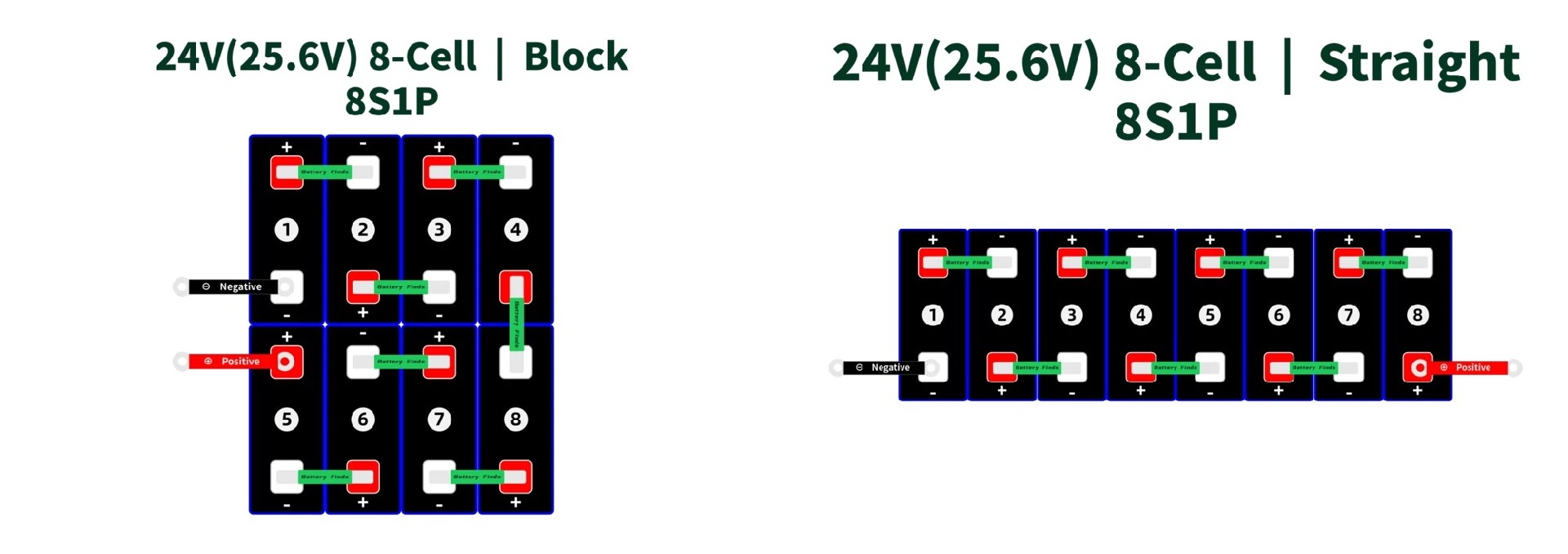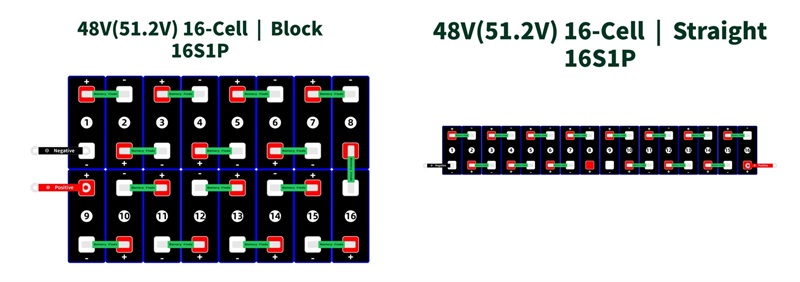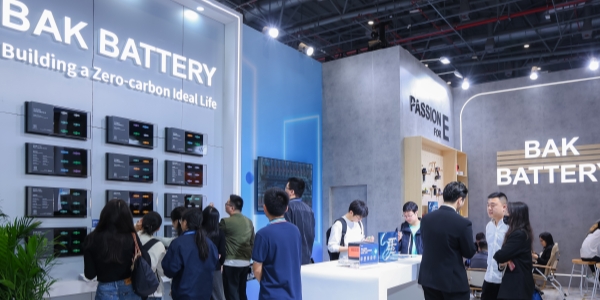Custom-Built 12V 24V and 48V LiFePO4 Battery Packs With LiFePO4 3.2V Cells
Many customers are enthusiastic about our customized battery pack services, and there are also many DIY lifepo4 battery pack enthusiasts who exchange ideas with us. Among them, the most popular are 12V, 24V, and 48V battery packs, as these three types can meet the needs of most devices.
Today, let’s take a look at some configurations for building customized 12V, 24V, and 48V battery packs using 3.2V LiFePO4 cells.
When constructing a battery pack, we typically need to consider the target voltage, capacity, and intended use, then select the appropriate connection method. Since the voltage of a single LiFePO4 cell is 3.2V, series and parallel connections are required to form a suitable battery pack. Generally, higher-voltage systems are more recommended, as they result in lower current, reduced wiring costs, and greater safety for DIY enthusiasts.
Below is a table showing how the voltage changes with different numbers of cells connected in series:
Cells in Series | 4 | 8 | 15 | 16 |
Battery Nominal Voltage | 12.8V | 25.6V | 48V | 51.2V |
Operational Voltage Range | 12 - 14.4V | 24 - 28.8V | 45 - 54V | 48 - 57.6V |
It’s worth noting that differences in battery brands and actual conditions may lead to variations in the connection and arrangement methods for different battery packs. The optimal approach depends on your specific needs and the characteristics of the cells. We typically recommend a straight-line arrangement, as this places the positive and negative terminals farther apart, enhancing safety.
Next, we’ll show you the most common configurations for 12V, 24V, and 48V battery packs.
12V(12.8V) LiFePO4 Cell Configurations
For example, 12V 4-Cell Configurations

Figure 1: The 12V (full voltage 12.8V) battery pack composed of 3.2V LiFePO4 battery adopts 4S1P (4 series and 1 parallel) connection mode. Four Battery cells are connected in series. The negative terminal of battery 1 is output as the negative terminal of the battery pack, and the positive terminal of battery 4 is output as the positive terminal of the battery pack. In the middle, the positive and negative terminals of each battery are connected successively through the Battery Finda.
Figure 2: The battery pack consists of 4 3.2V LiFePO4 batteries in 4S1P (4 series and 1 parallel) with a nominal voltage of 12V and a full voltage of 12.8V. The Battery is connected in the form of "Block", the negative electrode of battery 1 leads to the negative electrode of the battery pack, and the positive electrode of battery 3 leads to the positive electrode of the battery pack, and the batteries are connected in series through the Battery Finda.
Figure 2: The 12V (12.8V fully charged) battery pack composed of 4 3.2V LiFePO4 batteries, connected in 4S1P (4 series 1 parallel). The negative electrode of Battery 1 leads to the negative electrode of the battery pack, and the positive electrode of battery 4 leads to the positive electrode of the battery pack. The batteries are connected through the Battery Finda to provide stable 12V voltage output, which is suitable for devices with corresponding voltage requirements.
Consult customer service: 12V 8-Cell Configurations
24V(25.6V) LiFePO4 cell Configurations
For example, 24V 8-Cell Configurations

Figure 1: The 24V (25.6V) battery pack made of 3.2V LiFePO4 battery adopts the connection mode of 8S1P (8 series 1 parallel). Eight batteries are connected in series, each battery voltage is 3.2V, and the total voltage after the series reaches 25.6V (nominal 24V). The figure clearly marks the Positive and Negative terminals (Negative terminals, Positive terminals) and the Battery Finde. This connection method can increase the voltage without changing the battery capacity. It is suitable for devices that have certain requirements on voltage, such as some power tools and energy storage systems. Can provide stable high voltage output.
Figure 2: The 24V (25.6V) battery pack is composed of 3.2V LiFePO4 batteries, using 8S1P (8 series 1 parallel) connection mode. Eight batteries are connected in series, each battery voltage is 3.2V, and the total voltage after series is 25.6V (nominal 24V). The diagram clearly marks the Negative and Positive electrodes, as well as the Battery Finde. This connection method is often used for devices requiring high voltage, such as specific electric devices and small energy storage devices, to increase the output voltage without changing the battery capacity to ensure stable operation of the device.
Consult customer service: 24V 16-Cell Configurations
48V(51.2V) LiFePO4 cell Configurations
For example, 48V 16-Cell Configurations

Figure 1: A 48V (51.2V) battery pack composed of a 3.2V LiFePO4 battery adopts a 16S1P (16 series and 1 parallel) connection mode. Sixteen batteries are connected in series, and the total voltage reaches 51.2V (nominal 48V). The diagram clearly marks the Negative and Positive electrodes, as well as the Battery Finde. It is suitable for application scenarios that require high voltage, such as electric bicycles and backup power supplies of communication base stations. It can increase the output voltage to meet the power requirements of the device without changing the battery capacity, ensuring stable and efficient operation of the device.
Figure 2: A 48V (51.2V) battery pack composed of 3.2V LiFePO4 cells, connected in 16S1P (16 series and 1 parallel). 16 batteries in series, because a single battery 3.2V, the total voltage after series up to 51.2V (nominal 48V). The figure clearly marks the Negative and Positive terminals, as well as the connection points between batteries. This connection method is suitable for devices requiring high voltage power supply, such as electric motorcycles, solar energy storage systems, etc., which can increase the output voltage without changing the battery capacity.
Consult customer service: 48V 32-Cell Configurations
The above is our list of common configurations for building 12V, 24V and 48V battery packs with 3.2V LiFePO4 batteries, for more common combinations, you can contact us, we can tailor the battery pack for your energy solution, welcome to inquire.

